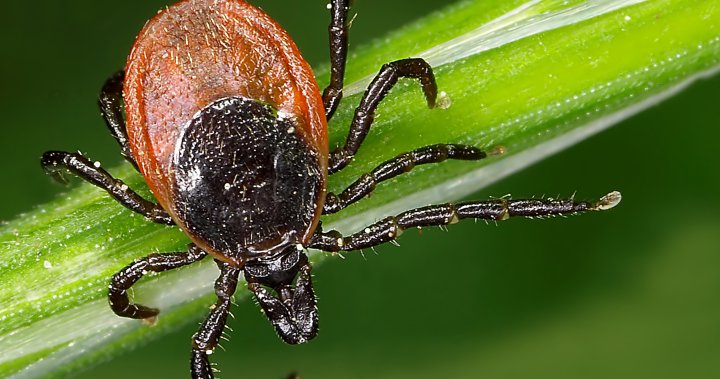As I step into the clearing at Birds Hill Provincial Park, just north of Winnipeg, the morning sun filters through a canopy of trembling aspen leaves. It’s early May—too early, many locals tell me, for the usual precautions against ticks and mosquitoes. Yet Diane Saurette, a trail guide and longtime Manitoban, is already tucking her pants into her socks.
“My grandfather would’ve been in shorts until July,” she laughs, adjusting her hat. “But that was a different Manitoba. Now I’m checking for ticks in April.”
Saurette isn’t being overly cautious. Manitoba is experiencing a notable increase in tick and mosquito populations this year, with entomologists and public health officials pointing to warming temperatures as the primary driver. What once seemed like a predictable seasonal nuisance now represents an expanding risk with implications for both human health and wildlife ecosystems.
“We’re seeing black-legged ticks, or deer ticks, establishing populations in areas where they simply couldn’t survive twenty years ago,” explains Dr. Kateryn Rochon, an entomologist at the University of Manitoba who has tracked tick population dynamics for over a decade. “What many Manitobans don’t realize is that our province has warmed at nearly twice the global average rate.”
During our meeting at her university lab, Rochon shows me maps documenting the northward expansion of tick habitats. The visual evidence is striking—a steady progression that correlates with Manitoba’s warming climate.
According to Environment and Climate Change Canada, Manitoba has experienced an increase of approximately 1.7°C in average annual temperatures since 1948, with winter temperatures rising even more dramatically. These warmer, shorter winters allow ticks to survive in greater numbers and begin their questing activities—actively searching for hosts—earlier in the spring.
“The black-legged tick is particularly concerning because it can transmit Lyme disease and other pathogens,” Rochon notes, carefully handling specimens under her microscope. “And we’re now finding them as far north as Riding Mountain National Park and the Interlake region.”
Meanwhile, mosquito populations are also responding to changing conditions. Standing beside a wetland monitoring station near Oak Hammock Marsh, Taz Stuart, an entomologist and former City of Winnipeg insect control branch head, explains how shifting precipitation patterns and earlier spring thaws create ideal breeding conditions.
“In April, we recorded mosquito trap counts that we typically wouldn’t see until June,” Stuart says, checking a collection device that resembles a miniature vacuum. “When you combine earlier spring melt with periodic heavy rainfall events—which climate models predict will become more common in Manitoba—you get expanded habitat and longer breeding seasons.”
For the families I meet at Birds Hill Park, these changes have already altered how they interact with Manitoba’s beloved natural spaces. Megan Carriere, a mother of three from Selkirk, now performs tick checks on her children after every outdoor adventure.
“My oldest was diagnosed with Lyme three years ago,” she says quietly as her children explore nearby. “We caught it early, but it was terrifying. Now we have a whole routine—protective clothing, repellent, checking every fold of skin. It’s just part of being outdoors in Manitoba now.”
Public health officials are responding to this changing landscape. Manitoba Health has expanded tick surveillance programs and launched awareness campaigns that begin earlier in the season. Dr. Richard Rusk, a medical officer of health with the province, emphasizes that these efforts represent a necessary adaptation to new realities.
“We’re not just seeing more ticks and mosquitoes—we’re seeing them for longer portions of the year,” Dr. Rusk explains during our conversation at the provincial health offices in Winnipeg. “That means a longer risk period for vector-borne diseases like West Nile virus, Lyme disease, and anaplasmosis.”
The Manitoba government reports that Lyme disease cases have gradually increased over the past decade. While numbers remain relatively low compared to provinces like Ontario and Quebec, the trend line points upward. In 2023, Manitoba recorded 37 confirmed cases of Lyme disease, nearly triple the number from a decade ago.
For Indigenous communities in Manitoba, these ecological shifts carry additional significance. Outside the Cultural Centre at Brokenhead Ojibway Nation, Elder Dave Courchene speaks to me about traditional knowledge regarding insects and seasonal patterns.
“Our teachings contain detailed observations about when certain insects would appear and what that meant for hunting, gathering, and preparing medicines,” Courchene explains. “When these patterns change rapidly, it disrupts not just practical activities but spiritual connections to the land and its rhythms.”
The situation in Manitoba mirrors a broader pattern across Canada’s prairie and boreal regions, where climate change is altering ecosystems at an unprecedented pace. Dr. Nicholas Ogden, a senior research scientist at the Public Health Agency of Canada, has documented similar trends nationally.
“The range expansion of ticks in particular is one of the most visible biological responses to climate change in Canada,” Dr. Ogden notes in our phone conversation. “Manitoba is experiencing what we’re seeing across much of the country—species moving northward approximately 35-55 kilometers per decade.”
Back at Birds Hill Park, Diane Saurette continues her guided hike, pointing out signs of spring while educating visitors about tick safety. She’s pragmatic about the changes, neither alarmist nor dismissive.
“I still love these woods, and I want others to love them too,” she says, helping a young visitor properly apply insect repellent. “We just need to adapt how we experience these places. The Manitoba I knew as a child is changing, but it’s still beautiful—still worth protecting and enjoying safely.”
As we complete the trail loop, I notice how seamlessly Saurette has incorporated tick awareness into her natural history narrative—a small but telling example of how Manitobans are adjusting to their changing environment, finding ways to preserve their connection to the outdoors while acknowledging new realities.
For now, Manitobans face a future where earlier springs and milder winters will likely continue to favor tick and mosquito populations. Yet in true prairie fashion, they’re meeting this challenge with a blend of scientific vigilance, practical adaptation, and an enduring love for their distinctive landscape—ticks, mosquitoes, and all.






